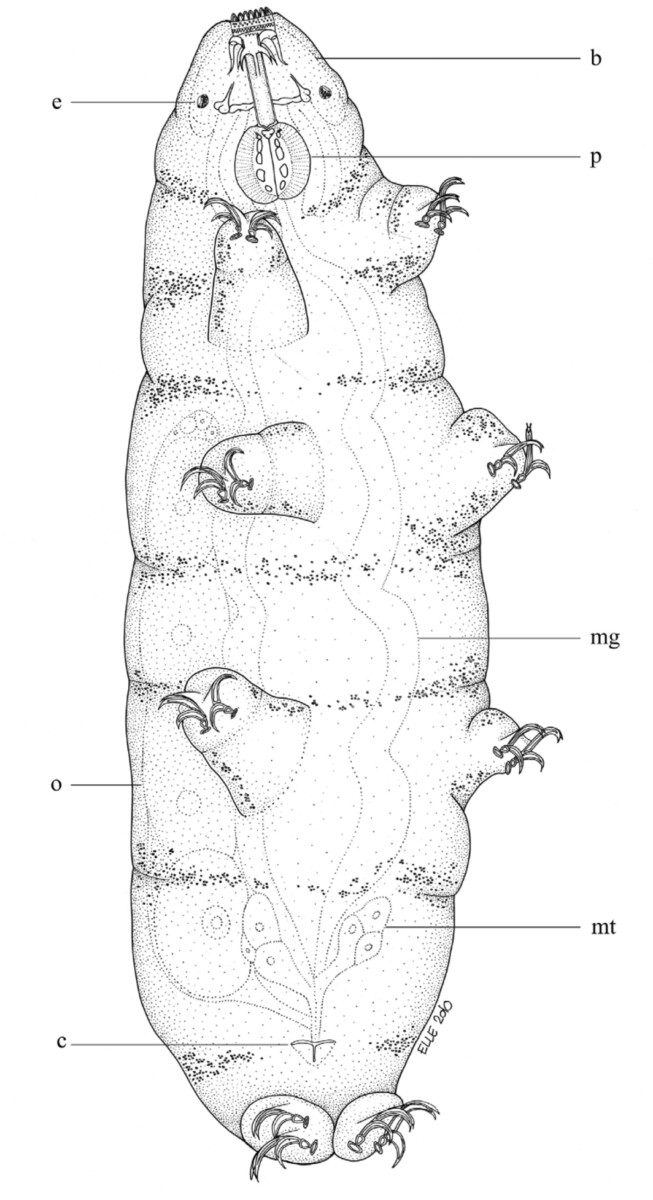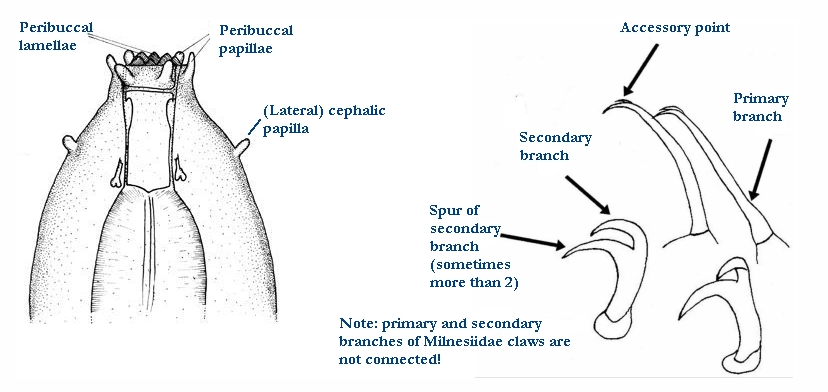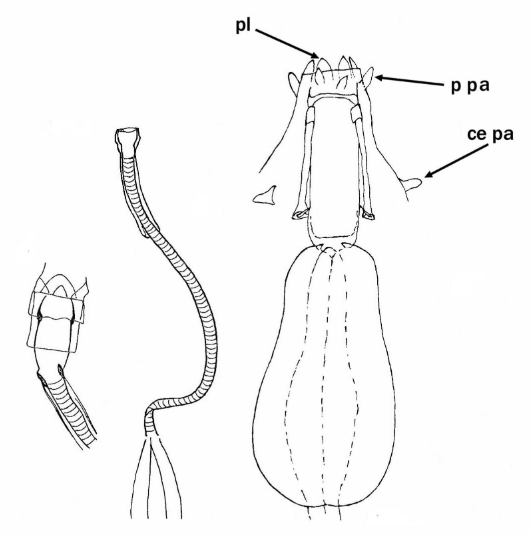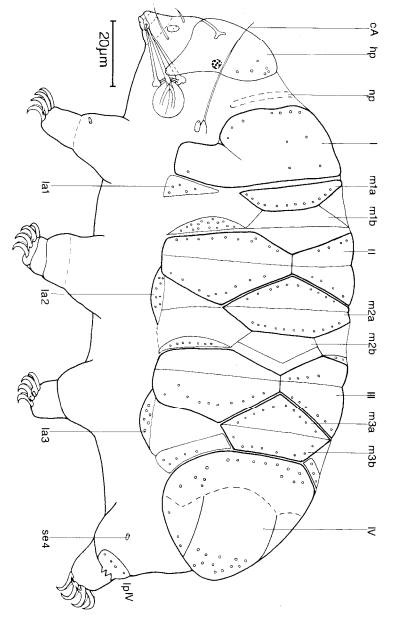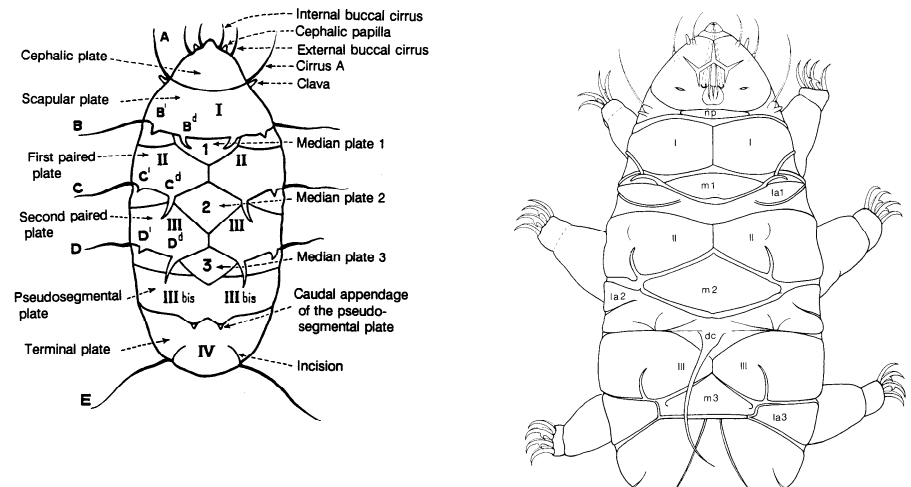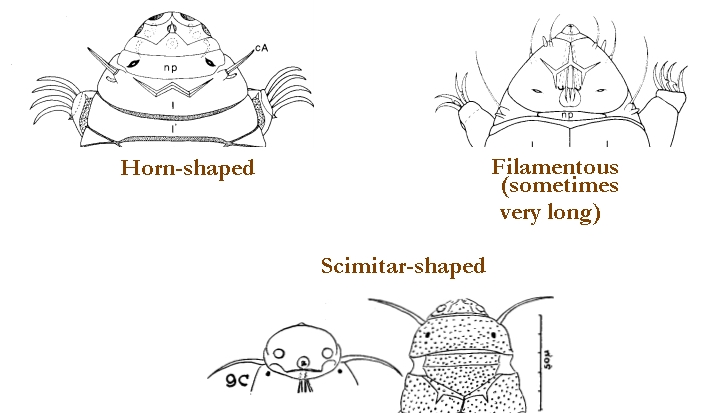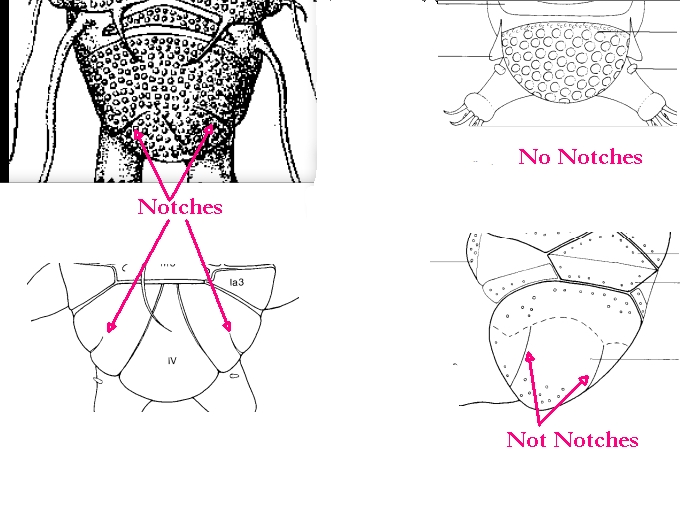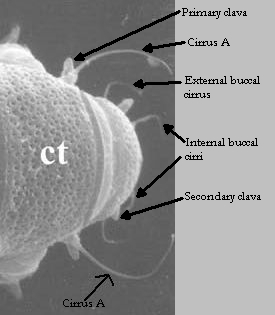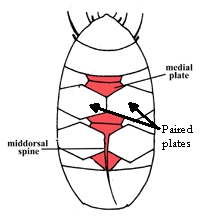Austeruseus from Trygvadóttir & Kristensen 2011 in Degma & Guidetti 2018: “Rigid straight buccal tube; 2 to 6 hook-shaped appendages for insertion of the stylet muscles present on the sides of the buccal tube; the mouth tubular; ventral cuticular enforcement of the buccal tube as a thin line (instead of ventral lamina). Eggs laid freely.”
Citations:
Degma P, Guidetti R. 2018. Tardigrade Taxa. In: Water Bears: The biology of tardigrades. Schill RO, Editor. Switzerland: Springer Nature. p. 371-409. DOI: 10.1007/978-3-319-95702-9_15.
Trygvadóttir BV, Kristensen RM. 2011. Eohypsibiidae (Eutardigrada, Tardigrada) from the Faroe Islands with the description of a new genus containing three new species. Zootaxa. 2886: 39-62.
